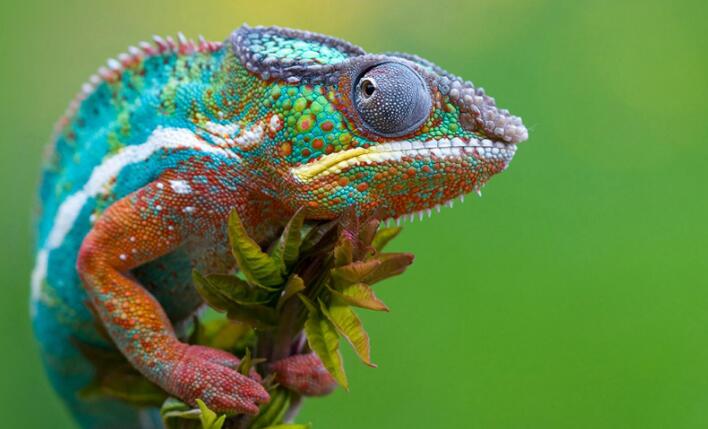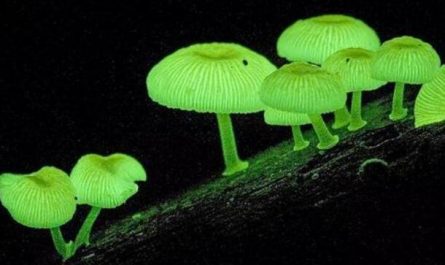The masters of disguise in nature are chameleons, and they are also called “magicians of the animal kingdom.” Many people know that the reason why chameleons change color is to disguise and avoid natural enemies, but did you know that chameleons change color to communicate with their kind and express their wishes? So how does the chameleon change color? Is it really caused by changes in its own pigment? Let’s find the answer together.
The communication information of the chameleon will be transmitted through the color of the skin. If an enemy is invading its territory, the chameleon will turn the calm green of the body into a bright red to warn and threaten the opponent. If the other party ignores the threat or deliberately provokes, then the chameleon will then darken the color of its body and prepare to launch an attack to drive away the intruder. At the courtship stage, if the female chameleon is not satisfied with the courtship in front of her, she will also dim her color and flash red spots to express her dissatisfaction.
Why does the chameleon have so many color changes? Let’s start with the body structure of the chameleon. Because there are three layers of pigment cells in the chameleon. The surface skin of a chameleon is transparent. The pigment cells in the innermost layer are called melanocytes, and the melanin in it can blend with the upper cells to change color; the middle layer is composed of guanine cells, and this layer mainly regulates the display of dark color. Blue; the outermost cells are mainly composed of yellow and red pigments. When the nerves sense changes in the outside world, they will give orders. At this time, the pigments between the layers will blend and change. This is why we see chameleons of different colors. In addition, because chameleons are cold-blooded animals, they do not have a mechanism to automatically adjust body temperature, so they often change the color of their skin to darker to absorb more light and heat.
Scientific research always makes new discoveries in questioning. A report from a research institution proposed that there is a layer of iris cells under the pigment cells of a chameleon, and the transparent nano-material in the iris cell layer is the main cause of the chameleon’s discoloration. The change in the structure of the nanocrystal will change the color. The report said that when the chameleon is calm, the nanocrystals are distributed in a dense network, which reflects blue light. When the chameleon is tense or excited, this nanocrystalline structure will become loose, and the refracted light will appear yellow, red and other colors.
The researchers also found that there are larger and more irregular crystals under this layer of dense iris cells. This layer of crystals can refract strong light, which means that it is essentially a heat shield for the body. These two layers of rainbow cells allow the chameleon to quickly switch between various colors.
The above two statements have their own scientific principles, and we will wait and see the final scientific conclusion.






